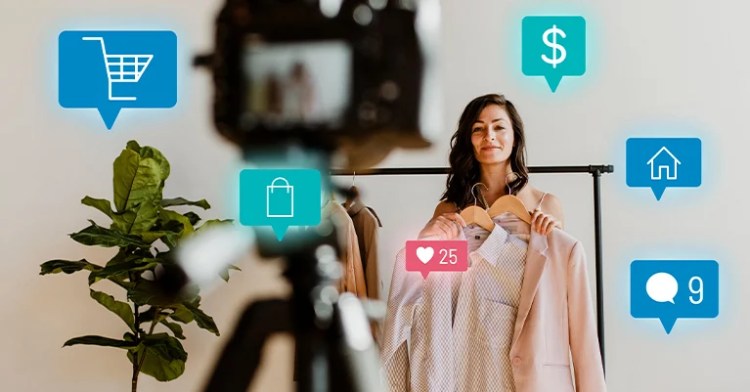People today scroll past ads but stop for content from those they trust online. This trust makes influencer marketing key for brands that want to reach new customers. When done right, these campaigns work better than regular ads regarding clicks and sales. That’s why brands now spend more money on working with social media personalities.
In this guide, you’ll learn how to build influencer campaigns step by step. We’ll show you how to find the right partners for your brand, create clear project plans, and track whether your campaigns are working. These tips will help if you’re new to influencer marketing or want to improve your current approach. Each section offers straightforward advice based on what works in actual campaigns.
What Is Influencer Marketing and Why Does It Matter?
Influencer marketing has changed how brands connect with audiences. This method uses people with loyal followings to promote products. Rather than talking directly to your market, you team up with influencers who share your message in their unique voice.
Why does this work so well? Trust is the foundation of influencer marketing. When people follow someone for a long time, they trust that person’s advice. This trust extends to your brand when an influencer talks about your products.
The results are precise. Mission Digital Growth reports that businesses earn about $5.20 for every $1 spent on influencer marketing. This strong return is why 68% of marketers plan to spend more on influencer marketing this year.
How Influencer Marketing Works in Practice

Influencer marketing works on a basic idea: social proof that scales. When someone trusted recommends your product, their followers pay attention. This happens in four main ways:
- Authentic storytelling – Influencers blend your products into their personal stories
- Targeted reach – You reach specific audiences who care about your niche
- Content sharing – Your message goes beyond your own channels
- Social proof – Products gain trust through outside support
The best influencer partnerships feel real to the audience. The influencer keeps their usual style while talking about your brand. This natural approach sets good influencer marketing apart from regular ads.
Think of fitness brands working with health coaches or cooking products teaming up with food bloggers. These matches make sense to consumers and build real trust.
Types of Influencers and Which to Choose
When planning your influencer strategy, you’ll find different types of influencers. Each type offers unique benefits based on their reach and engagement:
Mega-Influencers (1M+ followers)
These are celebrities and major social media stars who offer huge reach but often with lower engagement. They work well for broad awareness but cost much more.
Mega-influencers bring instant credibility and massive exposure. They often have teams that create high-quality content and can reach millions in a single post. Brands like Nike, Adidas, and luxury fashion houses use mega-influencers for product launches and major campaigns.
However, these partnerships typically start at $10,000+ per post, with some celebrities charging $1 million+ for a single mention. Their audiences are also less targeted, which means you’ll reach many people outside your ideal customer profile.
Macro-Influencers (100K-1M followers)
These are known content creators with good reach and decent engagement. They understand brand deals and deliver polished content.
Macro-influencers have built their following through content creation rather than offline fame. They often specialize in specific niches like fitness, fashion, or gaming. Their audience size allows for significant reach while maintaining more relevant followers than mega-influencers.
These creators typically charge $2,000-$10,000 per post. They’re ideal for brands looking to break into new markets or boost credibility in their industry. Their content tends to be very professional, with many having production teams and managers.
Micro-Influencers (10K-100K followers)

These niche experts often have higher engagement and focused reach. Micro-influencers often provide the best ROI for influencer marketing campaigns because of their engaged communities.
Micro-influencers have built loyal audiences around specific interests. Their followers view them as trusted advisors rather than celebrities. Engagement rates for micro-influencers average 5% (compared to 1.7% for macro and mega-influencers).
They typically charge $200-$2,000 per post, making them accessible for brands with modest budgets. Beauty brands, fitness products, and niche services often find micro-influencers drive better conversion rates than larger influencers due to the trust factor.
Nano-Influencers (1K-10K followers)
These smaller creators have highly engaged, local, or niche audiences. They offer real connections at lower costs, making them great for small businesses.
Nano-influencers may have small audiences, but their followers are highly engaged—often friends, family, and community members. Their recommendations carry significant weight because they feel like advice from a friend rather than paid promotion.
Many work for free products or small fees ($50-$300 per post). Local businesses, startups, and brands targeting specific communities find nano-influencers especially effective. Their content often feels more authentic and less polished than larger influencers.
Your choice depends on your goals. Awareness campaigns might need larger influencers, while conversion goals often work better with micro or nano-influencers.
Building Your Influencer Marketing Campaign: A Step-by-Step Guide
Creating a strong influencer campaign takes careful planning. Follow these steps to build your strategy:
1. Define Clear Campaign Objectives
Start by setting clear goals. Are you trying to:
- Boost brand awareness
- Drive website traffic
- Generate sales or leads
- Build social proof
- Launch a new product
Your goals will guide every other choice in your influencer marketing campaign.
Vague objectives lead to vague results. Set specific, measurable targets like “increase Instagram followers by 20%” or “generate 500 qualified leads.” Well-defined goals help you select the right influencers and content approaches.
The most successful brands tie influencer goals to broader marketing objectives. For example, if Q3 focuses on customer acquisition, your influencer program should emphasize conversion-focused content rather than brand awareness. This alignment improves ROI tracking and helps justify your influencer budget to stakeholders.
Always include both primary and secondary objectives. While a campaign might focus mainly on driving sales, secondary goals like content creation or SEO benefits provide additional value that improves overall campaign ROI.
2. Identify Your Target Audience

Create detailed profiles of your ideal customers. Think about:
- Demographics (age, location, income)
- Psychographics (values, interests, lifestyle)
- Preferred platforms (Instagram, TikTok, YouTube, etc.)
- Content habits
This helps you find influencers whose followers match your target market.
Look beyond basic demographics to understand the specific subcultures and communities your audience belongs to. A 25-year-old fitness enthusiast in Seattle might follow completely different influencers than a 25-year-old fitness enthusiast in Miami.
Social listening tools help identify which topics resonate with your audience. Track hashtags, analyze comments on competitor posts, and review online discussions to understand what matters to your ideal customers. This intelligence guides both influencer selection and content direction.
Many brands make the mistake of choosing influencers based on personal preference rather than audience alignment. Trust the data over subjective opinions about which influencers “feel right” for your brand. The best partnerships often come from unexpected creators whose audience perfectly matches your buyer personas.
3. Select the Right Influencers
Finding the right influencer partners takes research. Look beyond follower counts to check:
- Audience match – Do their followers match your target market?
- Engagement level – Do followers interact with their content?
- Content fit – Does their style work with your brand?
- Authenticity – Do they build real connections with followers?
- Past brand work – How have they worked with other brands?
Use influencer search tools or look up industry hashtags to find potential partners.
Request audience demographics from potential partners before finalizing deals. Most professional influencers can provide basic audience data from their social platform analytics. This verification step ensures you’re not making partnership decisions based on assumptions.
Consider content quality and production value alongside metrics. Some influencers create stunning, professional-grade content that your brand can repurpose across marketing channels. This added value might justify working with a creator whose audience is slightly less aligned but whose content quality is exceptional.
Beware of fake followers and engagement. Tools like HypeAuditor or Social Blade can help identify suspicious activity. Red flags include sudden follower spikes, engagement rates that don’t match follower count, or comments that seem generic or bot-generated. Authentic engagement is worth more than inflated numbers.
Build a diverse influencer portfolio rather than relying on a single creator. Different influencers reach different segments of your market and protect you from the risks of associating your brand with just one online personality.
4. Develop a Compelling Brief
Once you’ve found influencers, create a clear brief that includes:
- Campaign goals
- Key messages
- Content guidelines
- Deliverables
- Timeline
- Success metrics
- Payment details
The best briefs give direction while allowing creative freedom. Influencers know their audience best, so trust their creative input.
Provide brand guidelines but avoid micromanaging the creative process. Over-prescriptive briefs lead to inauthentic content that audiences immediately recognize as advertising. The most effective content maintains the influencer’s unique voice while incorporating your key messages naturally.
Include examples of previous successful influencer content your brand has used. These references help creators understand your expectations while still leaving room for their creativity. If this is your first campaign, share examples from other brands you admire.
Discuss content rights and usage terms upfront. Will you want to repurpose the content on your own channels? How long will you need these rights? Clear agreements prevent misunderstandings later and may affect pricing if you’re requesting extended usage rights.
Consider including an exclusivity clause if you’re in a competitive industry. This prevents influencers from promoting rival products during or shortly after your campaign. Remember that exclusivity typically increases costs and may not be necessary for every partnership.
5. Manage the Relationship

Good influencer marketing needs strong relationship skills. Treat influencers as creative partners, not just ad channels. Give quick feedback, respect their creative process, and keep open communication during the campaign.
Build long-term relationships rather than one-off transactions. Repeated collaborations with the same influencers build audience trust and typically deliver better results over time. Many brands see engagement rates increase with each successive post from a consistent partner.
Establish clear communication channels and response times. Some influencers prefer email, while others respond better to messaging apps or phone calls. Adapt to their preferences and set expectations for how quickly each party should respond to questions or feedback.
Create a feedback process that respects the influencer’s expertise. Frame suggestions as collaborative ideas rather than directives. Remember that the influencer has built their audience by understanding what content works for their followers. Balance your brand needs with their creative vision.
If possible, invite top-performing influencers to product development discussions or early access programs. This deeper involvement fosters authentic advocacy and gives you valuable insights from creators who understand your target audience intimately.
6. Track and Measure Results
Set metrics based on your goals. Common measures include:
- Reach and impressions
- Engagement rate
- Click-through rate
- Conversion rate
- Cost per new customer
- Audience growth
- Brand sentiment
Use tracking links, custom discount codes, or special landing pages to track results from each influencer.
Look beyond vanity metrics to measure true business impact. While likes and comments indicate content resonance, they don’t always translate to business results. Focus on metrics that connect directly to your campaign objectives, whether that’s website traffic, lead generation, or sales.
Compare influencer marketing performance against other channels. Calculate cost per acquisition or return on ad spend just as you would for paid social or email marketing. This apples-to-apples comparison helps justify budgets and identify your most efficient marketing channels.
Implement pixel tracking when possible to capture the full customer journey. Many conversions happen days or weeks after initial exposure to influencer content. Without proper attribution, you might undervalue the impact of your influencer campaigns.
Create a standardized reporting template that you update after each campaign. This historical record helps identify trends, seasonal variations, and which types of influencers or content approaches deliver the best results for your specific brand. Over time, this data becomes a competitive advantage in your influencer strategy.
Common Influencer Marketing Challenges and Solutions

Even well-planned campaigns face problems. Here are solutions to common issues:
Challenge: Finding real influencers
Solution: Look past numbers to check content quality and audience engagement. Ask for engagement data before collaborating.
Challenge: Measuring ROI
Solution: Use proper tracking with unique UTM codes, promo codes, or affiliate links for each influencer.
Challenge: Managing many relationships
Solution: Try using influencer platforms or management tools to make communication easier.
Challenge: Ensuring good content
Solution: Give clear guidelines while respecting the influencer’s style. Review content before posting when possible.
Future Trends in Influencer Marketing
The influencer marketing field keeps changing. Stay ahead by watching these trends:
- Long-term partnerships instead of one-time deals
- Performance-based pay models
- Employee advocacy programs alongside external influencers
- Authenticity and transparency becoming essential
- Video content dominating across platforms
- Influencer-led product creation and co-development
We’re also seeing more focus on building communities rather than just promotion. The best brands use influencer marketing to create a sense of belonging around their products.
Final Thoughts: Making Influencer Marketing Work for You
Influencer marketing offers great potential when done well. The key is to treat it as relationship-building rather than just advertising. When you connect with the right influencers and support their creativity, you’ll build real bonds with your target audience.
Remember that good influencer campaigns take time. Results grow as influencers introduce your brand to their followers in natural, engaging ways.
Start small, measure results, and expand what works. With good planning and real partnerships, influencer marketing can become your brand’s strongest growth channel. Are you ready to use influential voices for your brand? The steps in this guide will help you build campaigns that connect with audiences and deliver real results.




